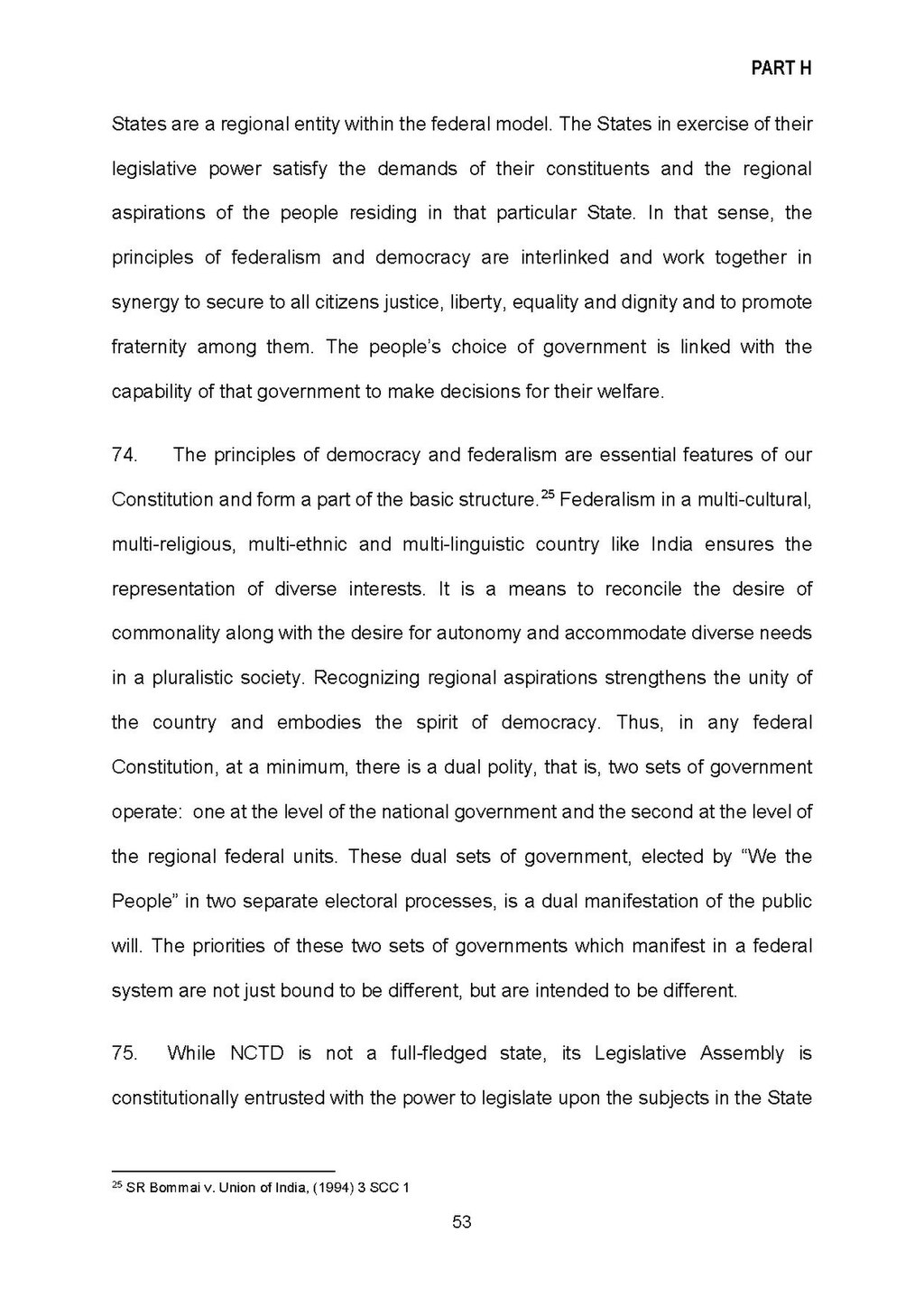States are a regional entity within the federal model. The States in exercise of their legislative power satisfy the demands of their constituents and the regional aspirations of the people residing in that particular State. In that sense, the principles of federalism and democracy are interlinked and work together in synergy to secure to all citizens justice, liberty, equality and dignity and to promote fraternity among them. The people’s choice of government is linked with the capability of that government to make decisions for their welfare.
74.The principles of democracy and federalism are essential features of our Constitution and form a part of the basic structure[1]. 25 Federalism in a multi-cultural, multi-religious, multi-ethnic and multi-linguistic country like India ensures the representation of diverse interests. It is a means to reconcile the desire of commonality along with the desire for autonomy and accommodate diverse needs in a pluralistic society. Recognizing regional aspirations strengthens the unity of the country and embodies the spirit of democracy. Thus, in any federal Constitution, at a minimum, there is a dual polity, that is, two sets of government operate: one at the level of the national government and the second at the level of the regional federal units. These dual sets of government, elected by “We the People” in two separate electoral processes, is a dual manifestation of the public will. The priorities of these two sets of governments which manifest in a federal system are not just bound to be different, but are intended to be different.
75. While NCTD is not a full-fledged state, its Legislative Assembly is constitutionally entrusted with the power to legislate upon the subjects in the State
53
- ↑ SR Bommai v. Union of India, (1994) 3 SCC 1
